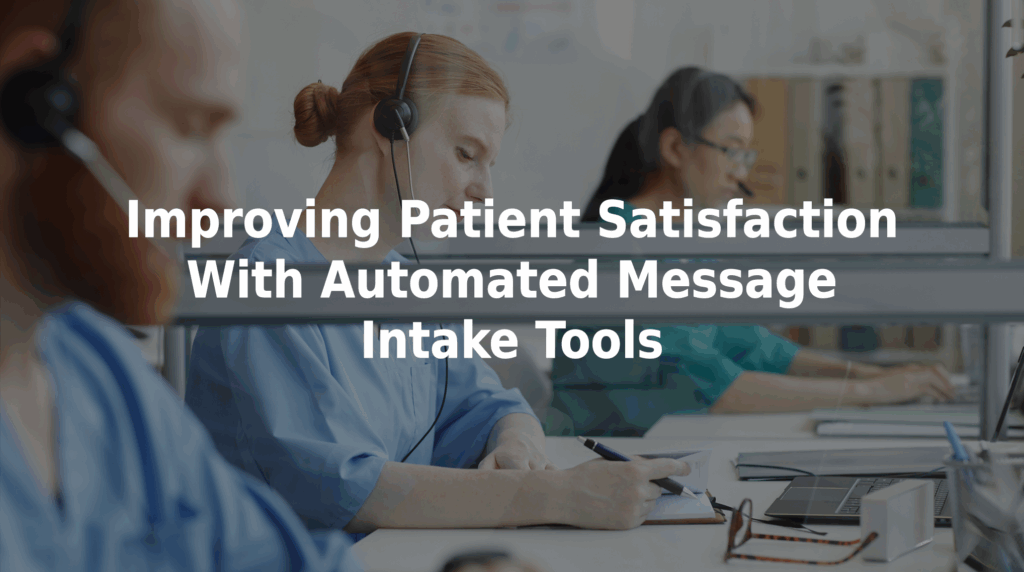Improving Patient Satisfaction With Automated Message Intake Tools
In today’s healthcare landscape, patient satisfaction is no longer a bonus — it’s a benchmark for quality and retention. One of the most overlooked ways to improve it is by optimizing communication when patients first report their symptoms. Below, we explore how improving patient satisfaction with automated message intake tools helps medical practices and hospitals reduce delays, streamline documentation, and provide faster, safer care.
The Patient Perspective: Why First Impressions Matter
When a patient calls a medical practice or submits a concern online, they expect:
- A prompt response.
- Clear communication.
- Confidence that their issue is understood and addressed correctly.
However, if the message intake process is slow, inaccurate, or leads to multiple follow-up calls, satisfaction can quickly plummet — and patients may look elsewhere for care.
Common Communication Gaps That Hurt Satisfaction
- Incomplete or vague messages that delay responses
- Repeated callbacks due to missing or unclear information
- Long hold times caused by overwhelmed call center staff
- No visibility into whether a concern has been received or reviewed
These issues don’t just frustrate patients — they create bottlenecks for clinical staff and increase administrative overhead. Instead, practices should consider incorporating more automated solutions that can be used by their frontline workers, whether it’s knowing what questions to ask patients about their symptoms, or utilizing chatbots to engage with those patients directly.
How Automated Intake Improves the Patient Experience
TriageLogic offers a powerful solution to address the challenges above: MedMessage Automate.
- A secure chat-based intake lets patients submit symptoms at their convenience.
- Automated workflows collect accurate information without human error.
- Immediate confirmation lets patients know that their requests have been received.
- After-hours availability provides peace of mind and continuous access.
Case Study: From Routine Refill to Rapid Response
An elderly patient once called her doctor’s office to request a refill for vertigo medication. The nonclinical operator submitted it as routine, but a nurse manager reviewed it and followed up — only to learn the patient had also experienced dizziness, headache, and right-arm weakness. The nurse advised her to call 911 immediately for a possible stroke.
Had the patient been able to use MedMessage Automate, the system would have flagged those symptoms and prompted additional questions in real time. This kind of proactive intake not only protects patient health — it improves satisfaction by showing patients that their concerns are evaluated fully.
How Satisfaction Ties Into Long-Term Patient Loyalty
Patients who have positive communication experiences are more likely to:
- Return for future care.
- Recommend your practice to others.
- Leave positive reviews or survey scores.
- Comply with care plans and follow-up instructions.
Automated intake contributes to this by delivering consistency, clarity, and convenience — three pillars of the modern patient experience.
Boost Patient Satisfaction With Better Message Intake Today
If you’re looking for a way to enhance communication, reduce call times, and give your patients peace of mind — automation is the answer. Let’s schedule some time to talk about a demo!

